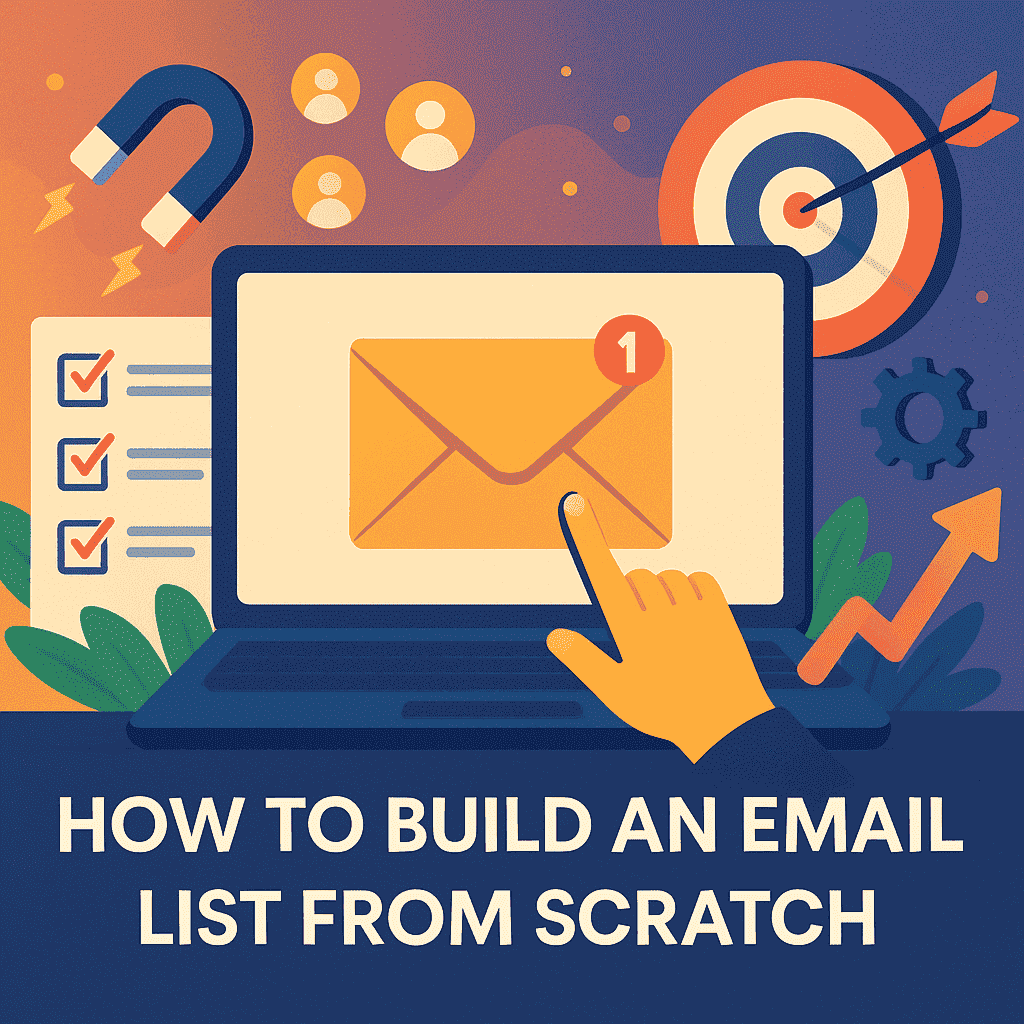With an average ROI of $44 for every $1 spent, email marketing continues to outperform other digital channels.
In an era dominated by fleeting social media trends and algorithm changes, email marketing remains a steadfast and powerful tool for small and medium-sized businesses (SMBs).
Building an email list from scratch may seem daunting, but with the right strategies and tools, it's an achievable goal that can significantly boost your business's growth and customer engagement.
Understand the Value of an Email List
An email list is more than just a collection of contacts; it's a direct line to your audience.
Direct Communication
Reach your audience without intermediaries
Higher Engagement
Personalized emails see higher open and click-through rates
Ownership
You own your email list, reducing dependency on third-party platforms
Define Your Target Audience
Before you start collecting emails, it's crucial to know who you're targeting. Understanding your audience ensures that your messaging resonates and attracts the right subscribers.
Steps to Define Your Audience
-
Create Buyer Personas
Define demographics, interests, and pain points
-
Analyze Existing Customers
Identify common traits among your current clientele
-
Research Competitors
Understand who they're targeting and how
Create a Compelling Lead Magnet
A lead magnet is an incentive offered to potential subscribers in exchange for their email address. It should provide value and address a specific problem your audience faces.
Popular Lead Magnets
- Ebooks or Guides
- Checklists or Templates
- Discounts or Coupons
- Webinars or Free Courses

Your lead magnet should solve a specific problem and deliver quick wins for your audience.
Design High-Converting Opt-In Forms
Your opt-in form is the gateway to your email list. Designing it effectively can significantly increase your subscription rates.
Best Practices
Form Design
- Clear Call-to-Action (CTA)
- Minimal Fields
- Eye-Catching Design
- Strategic Placement
Placement Tips
- Homepage above the fold
- End of blog posts
- Exit-intent popups
- Sidebar widgets
Leverage Multiple Channels to Promote Your Lead Magnet
Promotion Channels
- Social Media
- Blog Posts
- Guest Blogging
- Webinars and Events
Pro Tip
Create platform-specific content snippets to maximize engagement on each channel. What works on LinkedIn might not work on Instagram.
Implement Email Marketing Tools
Top Tools for SMBs
-
Mailchimp
User-friendly with robust analytics
-
ConvertKit
Ideal for creators and bloggers
-
ActiveCampaign
Advanced automation features
-
MailerLite
Affordable with essential functionalities

Choose a tool that matches your business needs and growth stage. Consider factors like:
- Budget constraints
- Required features
- Ease of use
- Scalability
Segment and Personalize Your Emails
Segmentation involves dividing your email list based on specific criteria, allowing for more targeted and relevant messaging.
Segmentation Criteria
- Demographics
- Behavioral Data
- Interests
Personalization Tips
-
Use First Names
Include the subscriber's name in the email
-
Tailor Content
Send content based on past behavior or preferences
-
Dynamic Content
Adjust email sections based on the recipient's profile
Maintain and Clean Your Email List Regularly
Maintenance Practices
Remove Inactive Subscribers
Identify and delete contacts who haven't engaged over a specific period
Validate Email Addresses
Use tools to detect and remove invalid emails
Monitor Bounce Rates
High bounce rates can affect your sender reputation
Analyze and Optimize Your Email Campaigns
Regular analysis helps in understanding what's working and where improvements are needed.
Key Metrics
- Open Rate
- Click-Through Rate (CTR)
- Conversion Rate
- Unsubscribe Rate
Optimization Tips
-
A/B Testing
Test different subject lines, content, and CTAs
-
Responsive Design
Ensure emails look good on all devices
-
Consistent Scheduling
Send emails at regular intervals to maintain engagement
Frequently Asked Questions
How often should I email my subscribers?
Aim for consistency without overwhelming your audience. Depending on your content and audience preferences, this could be weekly, bi-weekly, or monthly.
What is the best time to send emails?
While it varies by audience, studies suggest that mid-week mornings often yield higher open rates. However, testing different times is essential to find what works best for your subscribers.
Can I buy an email list to get started?
It's strongly discouraged. Purchased lists often lead to low engagement, high unsubscribe rates, and potential legal issues. Building your list organically ensures better results and compliance.
How do I reduce unsubscribe rates?
Provide valuable content, avoid excessive emailing, and ensure your emails are relevant and personalized. Also, make the unsubscribe process straightforward to maintain trust.
What's the importance of a welcome email?
A welcome email sets the tone for your relationship with the subscriber. It's an opportunity to thank them, deliver the promised lead magnet, and guide them on what to expect next.
Building Your Email List: The Journey Starts Now
Building an email list from scratch in 2025 is a strategic endeavor that, when executed correctly, can significantly enhance your business's growth and customer engagement. By understanding your audience, offering valuable incentives, and leveraging the right tools and strategies, you can create a robust email list that serves as a powerful marketing asset.
Remember: Start small, focus on quality, and consistently deliver value to your subscribers.

